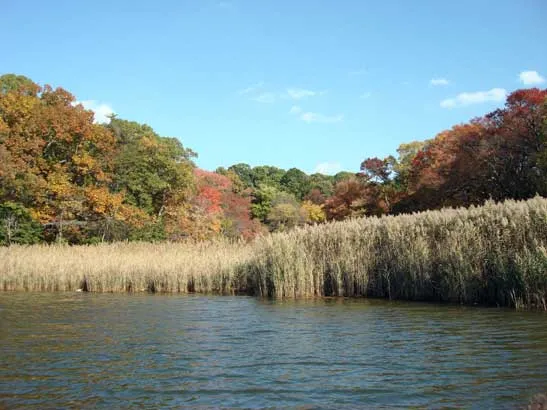Phragmites australis

An invasive strain of the plant Phragmites australis dominates this Chesapeake Bay wetland. The plant can easily grow up to 3 meters (9.8 feet) tall and alter coastal ecosystems. Scientists at the Smithsonian Environmental Research Center are trying to figure out the biological mechanisms driving the success of this invasive species.

